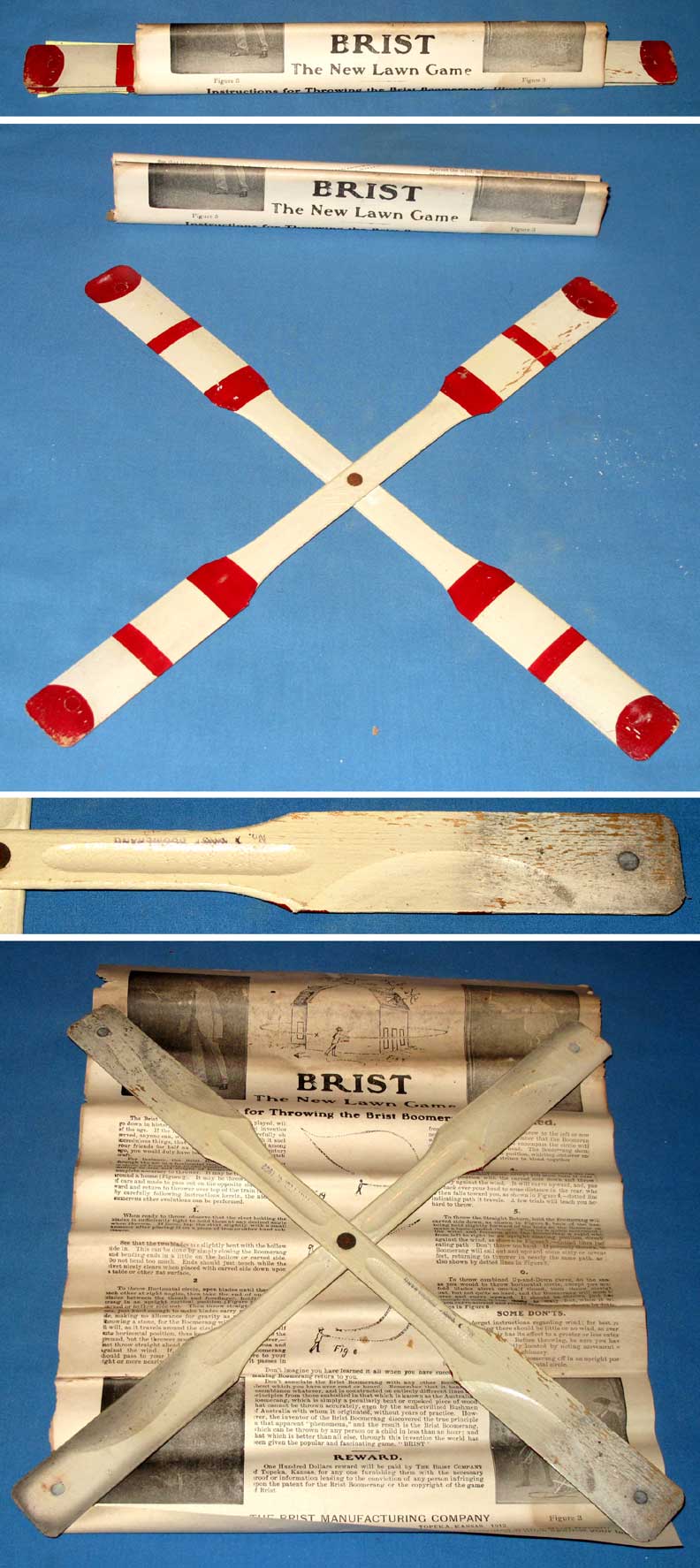Item TB490
This Item was Sold on 9 July 2023
for $35
Other collectable boomerangs for sale can be found on the
Collectable Boomerangs link.
Historical Pricing information for this item and similar collectable boomerangs can be found on the Boomerang Pricing Guide
|
This item is an original Brist Boomerang made between 1904 and 1916. The model number is difficult to read, but it appears to " No. 7 ". This boomerang has a small lead weight embedded into each blade tip. The original instruction sheet is also included. Each blade has 3 red stripes. I think that each model has a different paint pattern. All 4 blades have a bevel on the underside of the leading edge and the blades are also cambered to reduce inertia and increase lift. There is light chipping of the paint on the tips, perhaps from throwing? The paint also seems to be thin in some areas with a small portion of the wood visible as shown in the photos. The instruction sheet shows signs of aging, but it is in much better shape than most of the Brist sheets I have seen and these sheets are very rare.
Samuel Bristow was the first person in America to mass produce a boomerang and to make boomerang throwing a popular sporting activity. Samuel obtained his patent on 4 February 1902 and his factory in Topeka, Kansas manufactured about a million cross sticks in 15+ different models. Manufacturing ended at the beginning of World War I. All of the Brist boomerangs had advanced airfoiling features such as a bevel on the underside of the leading edge to enhance turning torque and camber on the underside of the narrow blade section to increase lift and reduce both drag and inertia. Many years later, all of these design features were eventually used on advanced Fast Catch boomerangs and many top boomerang designers claimed that they were the first to use these advanced design features. They were unaware that this had been done 75+ years earlier by Samuel Bristow. Some of the Brist boomerangs were also weighted on the tips. Again, many manufacturers of longer range boomerangs in the 1970s claimed that they were the first to add weights to increase distance. Again, this technique had been invented much earlier by Samuel Bristow and incorporated into many different Brist boomerang models. At one time, Brist boomerang throwing was more popular than croquet. The Brist game was very similar to the present day Australian Round event. The throwers had a target with concentric circles on the ground and points were awarded for how close you were to the center when the boomerang was caught. Catching was done with a large net, called the "Rakah". A world boomerang championship was even held in the city of St. Louis during the world fair in 1906. Samuel Bristow sold the factory around 1910 to a man named Bailey and the new owner's daughter painted most of the boomerangs that were made after that date. The daughter became a famous model many years later and when magazines displayed her picture, she always had a Brist boomerang in one of her hands and this was long after the company had ceased manufacturing the product. Sadly, the beginning of World War I started a decline in America's preoccupation with games and the Brist boomerang slowly disappeared from store shelves. |

How to Order | Back to: Boomerang Catalog | Collectable Boomerangs | Boomerang Pricing Guide | contact: Ted Bailey